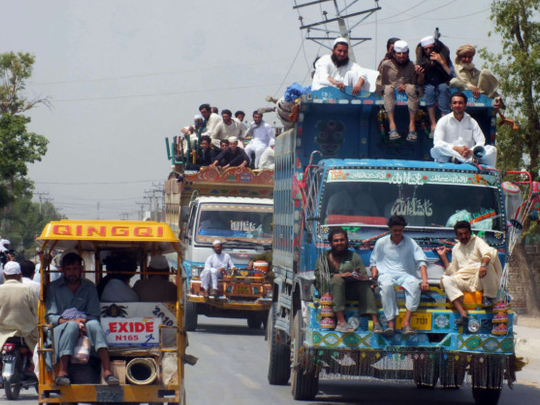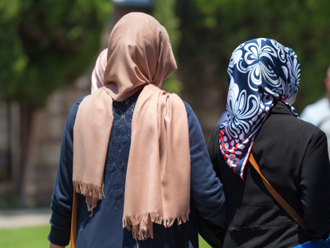
For the first time in nearly six months, US drone strikes hit Pakistan’s tribal region three times in less than a week, killing at least 20 militants with suspected ties to the Haqqani network. The hiatus was the longest pause in the controversial CIA programme since 2006 and the drones’ sudden return begs the questions: Why now? And is this the beginning of a renewed drone campaign in Pakistan?
As the Pakistani Taliban has long been the primary target of these strikes, it seems the answer to the first question is partially tied to the release of US Army Sgt Bowe Bergdahl, who was held by the Haqqani network for more than five years after being captured in Afghanistan. A former US military commander told the New York Times that with Bergdahl’s release on May 31, the US suddenly had more freedom to operate against militants in the region, particularly the Haqqanis, who have found a sanctuary within North Waziristan for years.
But Bergdahl’s release is not the only reason for the resumption of strikes. Pakistan has been fighting a losing battle with the various militant groups operating in the country’s autonomous tribal regions ever since peace negotiations with the Taliban fell through earlier this year. The Pakistani military has been itching to take the fight to the militants, but the civilian government, led by Prime Minister Nawaz Sharif, wanted to let the talks take their course. That seemed to end on June 8, when members of the Pakistani Taliban and the Islamic Movement of Uzbekistan (IMU) launched a major assault on Karachi’s Jinnah International Airport, rocking the country. Ten militants stormed the airport and killed at least 24 people before being killed by security forces. The next day, they attacked the airport’s security training facility, though no casualties were reported.
Coming days after those attacks — and ahead of a long-expected Pakistani military campaign in North Waziristan — it seems unlikely that the US drone strikes were not somehow sanctioned by the Pakistani government, especially since one strike killed at least four ethnic Uzbek fighters. To be sure, Islamabad has spoken out against the strikes, calling them a violation of Pakistan’s sovereignty, but it is hard to believe that the succession of events is somehow sheer coincidence.
Yet, it is also hard to believe that this is the start of a renewed drone campaign on the part of the US. In the lull between these most recent strikes and the last, which occurred on December 25, 2013, many analysts speculated that growing tensions between Pakistan and the US over the drone campaign were behind the slowdown. There had been increasing public outrage among Pakistanis at the alleged high number of civilian casualties caused by US drones, although according to data collected by the New America Foundation, there were only an estimated 3 to 5 civilian casualties caused by US drone strikes in 2013 (down from a record high of 87 to 99 in 2006).
However, there was also growing pushback from the Pakistani government. While some Pakistani officials would admit that the US drone campaign was effective, they always pointed out that the strikes were not formally approved by the Pakistani government and violated the country’s territorial integrity. The country’s parliament even unanimously demanded an end to the strikes in April 2012, when renegotiating the terms of the two countries’ counterterrorism partnership. (Just days later, a drone strike killed three suspected militants in North Waziristan).
This pattern of US strikes and Pakistani condemnation continued until last December, when the strikes stopped. With some room to breathe, Pakistan took matters into its own hands by entering into peace negotiations with the Taliban and when that failed, conducting military operations in the tribal areas. More than 150 militants — some from Uzbekistan — have been killed during the Pakistani military’s current offensive in which, the military has been using America-made F-16 fighter jets that are, by definition, less discriminate in their targeting than drones.
Though the three drone strikes may have signalled the start of the military’s assault on North Waziristan, the “comprehensive operations” will likely allow the US to dial back its drone campaign even more, which is not insignificant when you consider that 373 drone strikes in Pakistan over the past decade have killed somewhere between 2,097 to 3,449 people.
Since 2004, the US has launched drone strikes in Pakistan under the “unwilling or unable” doctrine, arguing that if Pakistan would not fight the militants living in the country’s tribal regions, the CIA would. That calculus, however, seems to have finally changed with a Pakistani military that is eager to take control of the tribal belt and pick up where the US left off and a civilian government that is willing to let it.
— Washington Post
Emily Schneider, a research associate, and Bailey Cahall, a policy analyst, both work in New America’s International Security Programme and are associate editors for the South Asia Channel.









